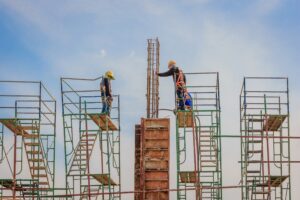
The Common Estimating Practices in Construction Trades
In the dynamic world of construction, the art and science of estimating stand as the backbone of every project’s success. Across the globe, construction trades employ a variety of estimating practices tailored to their unique regional, economic, and technological landscapes. This exploration takes us on a journey through the worldwide workflows that shape the common estimating practices in construction trades, offering insights into how these methodologies pave the way for efficient, cost-effective, and timely project completions.
Understanding Construction Estimating
At its core, construction estimating involves calculating the total cost required to complete a project. This process encompasses a wide range of activities, from analyzing blueprints and specifications to considering labor, materials, equipment, and overhead costs. It’s a critical step that ensures construction projects are financially viable and sets the stage for successful execution.
The Role of Technology
Technology’s impact on construction estimating cannot be overstated. Modern software solutions offer precision, speed, and flexibility, enabling estimators to quickly adapt to changes and manage complex data sets. From Building Information Modeling (BIM) to cloud-based platforms, technology bridges the gap between traditional practices and the future of construction estimating.
Common Practices in the Americas
In the Americas, construction estimating practices are as varied as the continent itself. In the United States, detailed cost databases and sophisticated software are the norms, reflecting the industry’s maturity and technological adoption. Brazil, with its growing construction sector, relies on a mix of traditional methods and emerging technologies to tackle its unique challenges.
European Approaches
Europe’s rich history and diverse architectural landscape require estimators to blend traditional craftsmanship with modern techniques. In the United Kingdom, stringent standards and regulations guide the estimating process, while in Germany, efficiency and precision are the hallmarks of construction estimating, supported by advanced engineering and technology.
Asia-Pacific Methods
The Asia-Pacific region, known for its rapid urbanization and construction booms, employs a wide range of estimating practices. China’s focus on large-scale infrastructure projects necessitates robust estimating frameworks, whereas Australia’s emphasis on sustainability and quality standards shapes its construction estimating practices.
Middle East and Africa
The Middle East and Africa, regions experiencing significant construction growth, adopt unique estimating practices that reflect their economic and environmental conditions. The United Arab Emirates, for example, incorporates cutting-edge technologies to deliver ambitious projects, while South Africa’s estimating practices are influenced by its commitment to social and economic development.
Challenges and Solutions
Despite the diversity in practices, construction trades worldwide face common challenges, including fluctuating material costs, labor shortages, and project complexities. Innovative solutions, such as machine learning for cost prediction and collaborative platforms for real-time communication, are paving the way for more accurate and efficient estimating processes.
The Future of Construction Estimating
As we look to the future, the integration of artificial intelligence, augmented reality, and other advanced technologies promises to further revolutionize construction estimating. These tools will enhance accuracy, enable real-time adjustments, and facilitate better decision-making, ultimately leading to more successful project outcomes.
Conclusion
The common estimating practices in construction trades around the world are a testament to the industry’s adaptability and commitment to progress. By embracing technology, addressing challenges head-on, and learning from each other’s experiences, the global construction community continues to build a foundation for a more efficient, sustainable, and prosperous future.
FAQs
- What is construction estimating? Construction estimating is the process of calculating the total cost required to complete a construction project, including materials, labor, equipment, and overhead.
- How has technology impacted construction estimating? Technology has greatly enhanced the accuracy, speed, and efficiency of construction estimating through software solutions, BIM, and cloud-based platforms.
- What are some challenges in construction estimating? Common challenges include fluctuating material prices, labor shortages, and managing the complexities of large-scale projects.
- What future technologies are expected to impact construction estimating? Artificial intelligence, augmented reality, and machine learning are anticipated to play significant roles in advancing construction estimating practices.
- How do construction estimating practices vary globally? Practices vary due to regional economic conditions, technological adoption levels, and specific industry standards and regulations.




